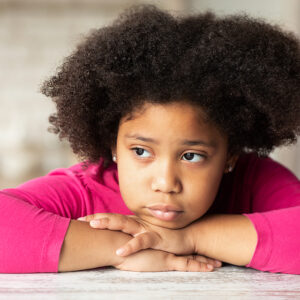We repeatedly have seen Black people gathered for teary hugs in specific neighborhoods. Why? Another Black child has been killed, not by police, but apparently following an intra-racial street crime incident.
Such as 5-year-old Devin McGregor, who died Sept. 2 — five days after he was shot in a vehicle during a drive-by shooting in Chicago. His nickname since birth was “Boom.” More than $33,000 was raised on a GoFundMe page for medical care.
He had been shot in the head.
The child’s grandfather said his mother had taken him to see his 25-year-old father. Upon leaving, Boom had just been safely placed in the car when someone in a black Hyundai drove up and fired at the vehicle.
The father, who was wounded, apparently was the intended target, police said.
So, was the incident gang-related or drug-based?
Boom was Black, which means chances are the shooter also is Black. He was the third child to be shot in Chicago within nine days. On Aug. 20, a 6-year-old girl was shot in the arm while attending a birthday party; on Aug. 22, a 7-year-old was shot, along with his mother and boyfriend, during a drive-by shooting.
Birthday parties. Dangerous, for sure.
Many Black children don’t stand a chance in some urban areas — from Los Angeles to Washington.
“We can’t live in this community and not know who shot who,” said Kelvin Johnson, director of Good News Partners to the Chicago CBS affiliate, “and we need them to come forward and save our kids.”
Saving Our Kids. Except police shootings receive the air time.
Donovan Lewis, 20, became the latest highly publicized Black man killed after police shot him in his bed in Columbus, Ohio.Lewis was sought by police for domestic violence with a felony warrant on a gun charge. Police body camera footage shows officers screaming for 10 minutes for him to come out of his apartment. Police later said he had a vape pen and no gun.
Unarmed, but he was on police video.
Five-year-old Boom was also unarmed. But there was no video of his assailant. And television news LOVES video. It also attracts viewers.
It also gives attorneys (such as the ubiquitous Benjamin Crump) and victims’ families something to bank on when seeking a monetary settlement from city government, whether warranted or not. Yes, all parties — rightly or wrongly — aim to get paid following a murky or halfway suspicious death at the hands of cops.
It also pays for these cities to settle (with money) after police-shooting cases:
(A) Payouts help mitigate riots.
(B) The burden of proof is lower for plaintiffs.
Gun violence organization James Brady United cites relevant statistics:
(A) A documented 4,084 Black people were lynched in 73 years; 93,262 were shot to death in 14 years.
(B) Black Americans are 10 times more likely than White Americans to die of “everyday gun violence.”
(C) Black children are 14 times more likely to die of gun violence than White children.
And most of it overwhelmingly is the result of Black-on-Black crime, something you’re not supposed to say publicly.
This violence we see in several predominantly Black settings appears to be cultural. Deeply ingrained. Which means the reason has to be more than racism or employment-related.
Like many positives or negatives in our society, the surrounding environment is a key factor.
We undoubtedly will see the results if children grow up in an environmentally challenged setting.
Take, for instance, the annual National Book Festival event held on Labor Day Weekend. The NBF estimates that 100,000 to 200,000 attendees frequent the one-day event at the Washington Convention Center when measuring foot traffic. But few are Black even though admittance is free and attendees are nationwide.
Furthermore, the nation’s capital has a sizable Black population.
And there is a children’s segment with such noted children’s literature authors as Soman Chainani, a Harvard graduate who draws a huge crowd with his popular fairytale books acquired by Netflix. In any regard, parents are responsible for their children’s environment, life experiences and educational options.
We saw the glee on Devin’s face when he proudly displayed a sign that read, “Today is my first day of kindergarten.” A few days later, his friends and loved ones released blue balloons in honor of Boom.
Balloons are a nice gesture. But to solve this child-violence issue destroying many sectors of the Black community, the environment requires much more.

